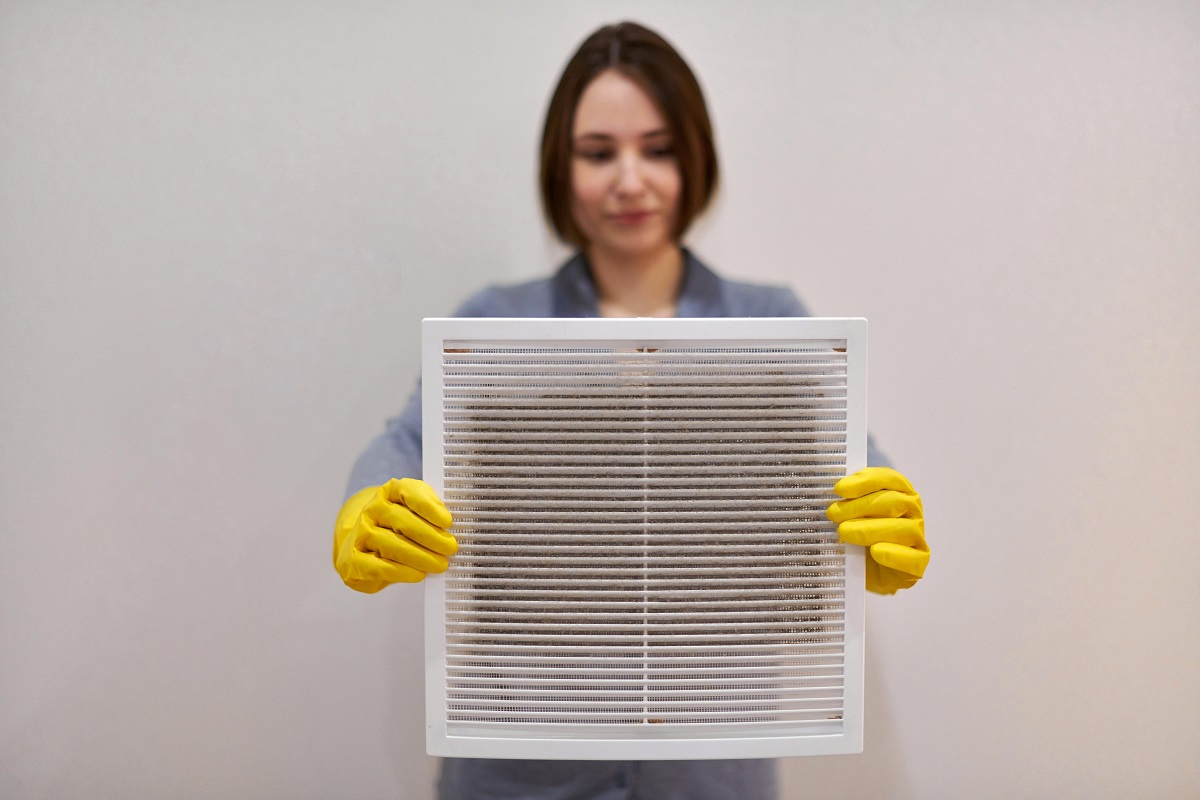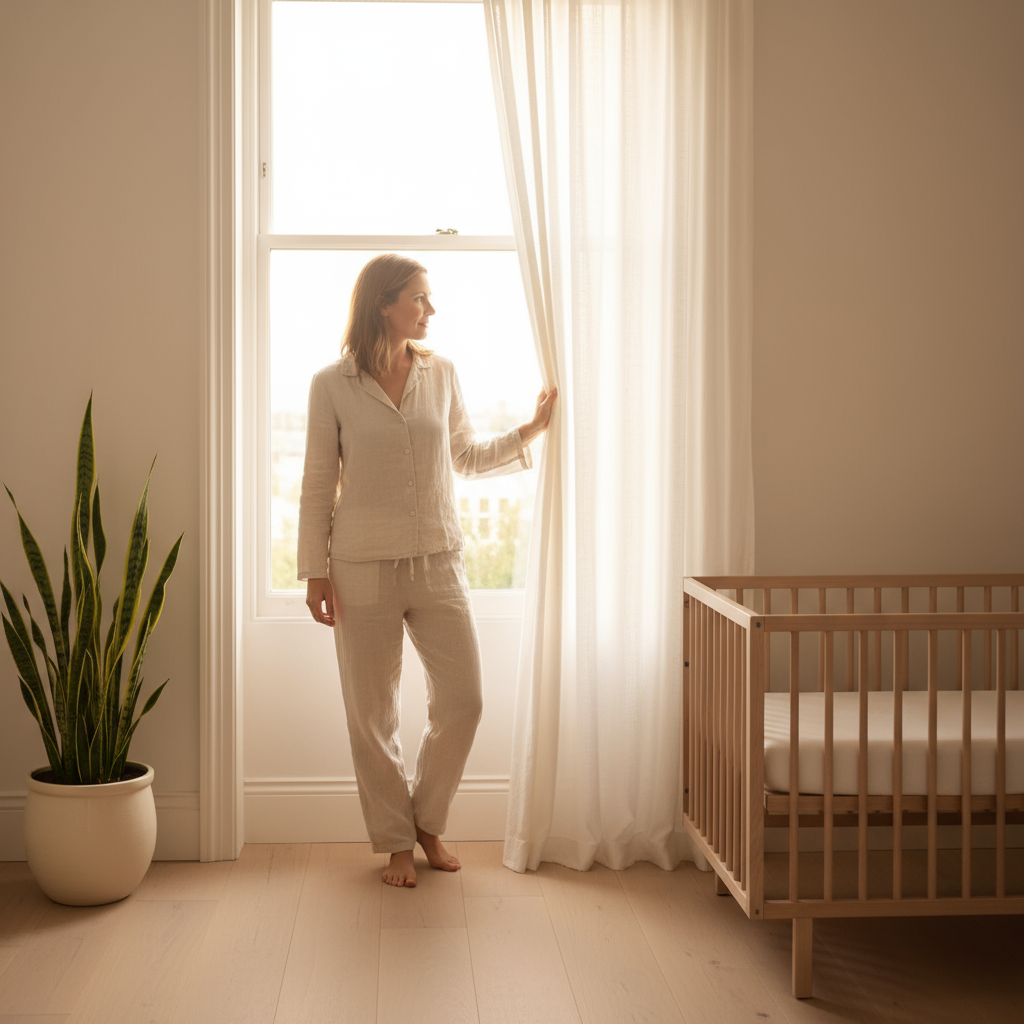A Certified Home Health Assessment for Properties: What to Expect

What to Expect From a Certified Home Health Assessment for Properties: A Professional's Guide
Table of Contents
- So, What Does a Home Health Assessment Include That a Standard Inspection Misses?
- Why Invest? Unpacking the Tangible Benefits of a Professional Home Health Assessment
- Is a Score the New Seal of Approval? Achieving a Healthy Home Certification for Residential Properties
- What's the Financial Payoff? How to Improve Property Value with a Home Health Score
Key Takeaways
- A certified home health assessment for properties is an in-depth, data-driven evaluation of environmental factors like air, water, mold risk, lighting, and EMFs, going far beyond a standard inspection.
- The core benefits of a professional home health assessment for businesses include proactive risk management, increased asset value, and a powerful competitive advantage in a health-focused market.
- This process is a critical environmental risk assessment for property managers, identifying potential liabilities before they escalate into costly problems or tenant complaints.
- A verifiable metric, like the Nestwell Home Health Score, functions as a modern form of healthy home certification for residential properties, serving as a potent marketing and trust-building tool.
- Leveraging these data-backed insights is a clear strategy to improve property value with a home health score, helping to justify premium pricing and reduce vacancy periods.
Are you tired of being reactive—dealing with tenant complaints about musty smells, "stuffy" air, or water quality only after they become a problem? In today's market, prospective tenants and buyers are more aware than ever of their home's impact on their well-being. They ask more questions, do more research, and choose properties that support a healthy lifestyle.
Understanding what to expect from a certified home health assessment for properties is the first step toward shifting from a reactive maintenance model to a proactive wellness strategy. It's a comprehensive environmental analysis that provides a clear, actionable snapshot of a property's health. This isn't just about finding faults; it's about uncovering opportunities to create safer, healthier, and more valuable living spaces for your clients and tenants.
This assessment delivers more than just data; it provides a strategic advantage. With a platform like Nestwell, this information is distilled into a single, easy-to-understand Home Health Score, turning complex environmental science into a tangible asset for your business. It allows you to prove the quality of your properties with facts, not just words, setting you apart in a crowded marketplace.
So, What Does a Home Health Assessment Include That a Standard Inspection Misses?
A standard home inspection is a vital part of any property transaction. It focuses on the bones of the house: the roof, foundation, electrical systems, and plumbing. It answers the question, "Is this house structurally sound and are its systems functional?" While a standard home inspection is crucial for structural and system integrity, it barely scratches the surface of the indoor environment's health.
A certified home health assessment asks a different, more personal question: "Is this home not just safe, but healthy to live in?" It looks at the invisible elements of a home that directly affect a person's daily health, comfort, and well-being. This is where the true difference lies. It moves beyond pass-or-fail checks to a detailed analysis of the living environment.
A comprehensive assessment process digitizes and analyzes the key factors that affect resident well-being. Think of it as a wellness check-up for the home itself. Instead of just looking for leaks, it analyzes the water. Instead of just checking the HVAC filter, it analyzes the air. Here's a closer look at what a home health assessment includes.
Air Quality Analysis
We spend most of our time indoors, so the air we breathe at home is incredibly important. A home health assessment goes far beyond checking for dust. It measures invisible threats that can impact respiratory health, sleep quality, and overall energy levels. This includes things like Volatile Organic Compounds, or VOCs. These are tiny particles released into the air from common household items like new paint, carpeting, furniture, and even cleaning products. That "new car smell" is a classic example of VOCs. An assessment measures the levels of these compounds to see if they are within a healthy range.
It also measures particulate matter, specifically PM2.5. These are microscopic particles, much smaller than a grain of sand, that can come from cooking, candles, or outdoor pollution that seeps inside. Because they are so small, they can be breathed deep into the lungs. An air quality analysis tells you exactly what is in the air, allowing you to take steps like improving ventilation or adding air purification to create a healthier breathing environment for residents.
Water Quality Testing
Many people assume that if their tap water is clear, it's clean. However, a lot of potential issues are invisible. A home health assessment includes detailed water quality testing that looks at what’s in the water your tenants or buyers will be drinking and bathing in every day. This is far more specific than a general report from the city water department, as it tests the water coming directly from the tap inside the property.
The testing can check for common contaminants, substances that can affect the taste and safety of the water. It also assesses the water's pH balance, which can affect plumbing and skin health, and its hardness. Hard water can lead to mineral buildup in pipes and appliances, causing damage over time, and can be harsh on skin and hair. Understanding your property's specific water profile allows you to address issues proactively, whether by installing a simple filter or a whole-home system, giving residents peace of mind.
Mold and Toxin Risk Evaluation
No property manager wants to deal with a mold outbreak. It's expensive to fix, can damage the building, and poses serious health risks. A standard inspection might spot visible mold, but by then, the problem is already significant. A home health assessment is proactive. It looks for the conditions that allow mold to grow in the first place.
Using specialized sensors, the assessment monitors humidity and temperature levels in different areas of the property, especially in places like basements, bathrooms, and kitchens. It identifies areas with high-moisture risk—areas ripe for mold growth—long before mold becomes visible or can be smelled. This early warning system allows you to address a small ventilation issue or a tiny leak before it turns into a massive and costly remediation project. It's about preventing the problem, not just cleaning it up.
Healthy Lighting Assessment
Lighting is more than just being able to see. The type and amount of light in a home can have a big impact on a person's health, particularly their sleep cycle, mood, and even productivity. This is especially important today, with more people working from home. An assessment analyzes the lighting environment within the property.
It considers things like the amount of natural light the home receives. It also looks at the type of artificial light being used. For example, the cool, blue-toned light common in many LED bulbs can be great for staying alert during the day but can disrupt the body's natural sleep cycle (circadian rhythm) if it's the main light source in the evening. The assessment provides recommendations on how to create a healthier lighting environment, such as using warmer-toned bulbs in bedrooms, which is a powerful wellness feature to offer residents.
Electromagnetic Field (EMF) Measurement
As our homes get "smarter" and filled with more electronic devices, a new environmental concern has emerged: Electromagnetic Fields, or EMFs. These are invisible fields of energy that are emitted by everything from Wi-Fi routers and smart meters to microwaves and even the electrical wiring in the walls. For many health-conscious individuals, understanding and managing EMF exposure is a growing priority.
A home health assessment includes measuring the levels of EMFs throughout the property. It identifies areas with high concentrations and a professional property health check-up pinpoints the sources. This information is valuable for prospective tenants or buyers who are concerned about this aspect of environmental health. Recommendations might be as simple as moving a bed away from a wall with high readings or placing a Wi-Fi router in a better location. Addressing EMFs shows a deep commitment to modern health concerns.
The Nestwell platform integrates all of these data points, answering "what does a home health assessment include?" with a single, holistic Home Health Score. This score makes it easy to understand a property's overall environmental health at a glance.
Why Invest? Unpacking the Tangible Benefits of a Professional Home Health Assessment
Moving beyond basic building codes to focus on resident wellness isn't just good ethics; it's great business. An investment in understanding your property's environmental health pays for itself many times over. The benefits of a professional home health assessment directly impact your bottom line, your brand's reputation, and your day-to-day operational efficiency. It's a strategic move that shifts your business from being reactive to proactive, putting you in control.
In a market where tenants and buyers have more choices than ever, offering a verifiably healthy home is a clear differentiator. It’s an investment that enhances the value of your asset while simultaneously protecting it from future problems. For property managers, real estate agents, and developers, the insights gained from a comprehensive property health check are invaluable tools for success.
It's the Ultimate Environmental Risk Assessment for Property Managers
Property managers are constantly balancing maintenance, tenant satisfaction, and financial oversight. One of the biggest and most unpredictable costs can come from environmental issues like mold, water damage, or major HVAC failures. A certified home health assessment is one of the most effective risk management tools available today. Instead of waiting for a tenant to call and complain about a musty odor or discolored wall, you can get ahead of the problem.
Imagine humidity sensors flagging a consistent rise in moisture in a bathroom wall. This automated alert could trigger a preventative maintenance check, revealing a slow, hidden pipe leak. Fixing that small leak might cost a few hundred dollars. If left undiscovered until it caused major water damage and a mold outbreak, the remediation project could easily cost tens of thousands of dollars, not to mention the cost of relocating a tenant. This proactive stance is the core of a modern environmental risk assessment for property managers. It transforms potential liabilities into manageable maintenance tasks, protecting your asset, your budget, and your reputation.
It Drives Client Satisfaction and Retention
Happy residents lead to long-term tenants and positive reviews. In the competitive rental and sales market, a certified healthy home is a powerful way to stand out. Today's consumers are educated and prioritize their health. When a prospective tenant is choosing between two similar apartments, the one that can provide a transparent Home Health Score showing excellent air quality and pure water has an immediate and compelling advantage.
This builds trust from day one. You are not just telling them the property is great; you are showing them the data to prove it. This commitment to well-being makes residents feel valued and cared for, leading to higher rates of lease renewal. For real estate agents, a high Home Health Score is a potent marketing tool that attracts discerning buyers who are willing to pay a premium for a home they know is healthy for their family. It elevates the conversation from square footage and finishes to quality of life, which is a much stronger selling point. These tangible benefits of a professional home health assessment create a loyal customer base and reduce the costs associated with tenant turnover and vacancies.
Is a Score the New Seal of Approval? Achieving a Healthy Home Certification for Residential Properties
Does every property need a formal, multi-thousand-dollar certification like WELL or LEED to be considered "healthy?" For most existing residential properties, especially those in a rental portfolio, the answer is a practical no. While these large-scale certifications are fantastic standards, particularly for new construction or major corporate buildings, the time, cost, and complexity involved are significant barriers for the average property manager or owner. The process can take months, involve architects and consultants, and require substantial renovations.
There is a more practical, accessible, and scalable way to prove the health of a home. A verifiable, data-backed metric like the Nestwell Home Health Score delivers the same core benefit: credible proof of quality. It functions as a de facto healthy home certification for residential properties that is affordable, easy to implement, and simple for anyone to understand. It takes complex scientific data about air, water, and more, and translates it into a single, intuitive number.
A score of 88 out of 100 is instantly understandable to a potential tenant, a buyer, or even a property owner. It immediately communicates a high standard of quality. This approach democratizes the concept of a healthy home. You no longer need a massive budget or a brand-new building to demonstrate your commitment to wellness. You can now assess, improve, and certify any property, of any age, anywhere.
For businesses managing large portfolios of properties, this approach is a game-changer. It allows you to create and enforce a new, standardized level of quality control across all your assets. Imagine being able to guarantee that every single property you manage meets a "healthy" benchmark of 85 or higher on the Home Health Score. This creates a powerful brand promise. Your company becomes known as the provider of verifiably healthier homes. This consistent, measurable standard of healthy home certification for residential properties gives your brand a reputation for excellence and trustworthiness that competitors who rely on subjective claims simply cannot match. It becomes a core part of your value proposition and a powerful tool for marketing and client acquisition.
What's the Financial Payoff? How to Improve Property Value with a Home Health Score
A high Home Health Score isn't just a number that makes people feel good—it's a verifiable financial asset that delivers a clear return on investment. In business, every decision must be weighed against its financial impact, and investing in a home health assessment offers multiple pathways to increased revenue and reduced costs. Here’s exactly how you can improve property value with a home health score:
1. Justify Premium Rates
In any market, value must be demonstrated to command a higher price. Simply stating that an apartment is "nice" or "recently updated" is subjective. But providing a data-backed report that shows a Home Health Score of 90, with excellent air quality and pure water, is a concrete fact. This allows you to validate higher rental rates or listing prices with confidence. When a prospective client asks why your property is priced 10% higher than a similar one down the street, you can present them with the Home Health Score. The conversation changes from bargaining to an appreciation of superior quality. "This 85-point healthy home" is a far more powerful and defensible marketing statement than "nice apartment." It gives your leasing agents and real estate brokers a unique selling proposition that directly translates to higher income per unit.
2. Decrease Vacancy and Lease-Up Time
Vacant properties are a drain on resources. Every day a unit sits empty is a day of lost revenue. A certified healthy home is a magnet for the growing demographic of health-conscious individuals and families. These people are not just passively browsing; they are actively seeking out properties that align with their wellness goals. By marketing your high Home Health Score on your website, in listings, and through social media, you attract a wider and more motivated pool of applicants. This increased demand means you can fill vacancies faster, reducing turnover time significantly. For new developments, promoting a portfolio of certified healthy homes can dramatically shorten the initial lease-up period, allowing you to start generating revenue much sooner.
3. Boost Your Brand's Market Position
In the long run, your brand's reputation is your most valuable asset. By consistently using a home health assessment, you can build a reputation as the go-to provider for verifiably healthier homes in your market. This sets you apart from competitors who are still focused only on location and amenities. When people think of quality and trustworthiness, they will think of your brand. This leads to more referrals, better partnerships, and a stronger overall market position. You are no longer just managing or selling properties; you are delivering a superior living experience, and that distinction is priceless.
Crucially, the Nestwell marketplace empowers you to act on the assessment's recommendations. The platform doesn't just identify problems; it provides a clear path to improvement. By connecting you with a network of vetted professionals who can fix identified issues, Nestwell provides a streamlined solution to not just measure but actively improve property value with a home health score.
The Future of Property Management is Proactive and Healthy
A certified home health assessment is no longer a luxury add-on; it's a strategic tool for modern property management, real estate, and development. The old, reactive model of waiting for problems to arise is inefficient, costly, and fails to meet the expectations of today's discerning clients. A proactive environmental analysis mitigates risk, enhances asset value, and directly answers the growing consumer demand for healthier living spaces.
It's about making smarter, data-driven decisions that benefit both your business and your residents. By understanding the full picture of a property's environmental health, you can prevent expensive repairs, attract and retain high-quality tenants, and build a brand reputation founded on trust and excellence. Nestwell simplifies this entire process, providing a single, authoritative score and a clear path to improvement.
Ready to turn home wellness into your competitive advantage? Get your free initial Home Health Score assessment from Nestwell today and see what's really going on inside your properties.
Frequently Asked Questions (FAQ)
Q: How is a Nestwell assessment different from a traditional home inspection?
A: A traditional inspection focuses on structural and mechanical systems, essentially asking if the house is functional and safe from a construction standpoint (pass/fail). A Nestwell assessment analyzes the environmental factors that impact human health—air, water, mold risk, lighting, and EMFs—and combines them into a single, actionable Home Health Score. It answers the question, "Is this home healthy to live in?"
Q: What is the real ROI of investing in a professional home health assessment?
A: The ROI comes from several areas: mitigating the risk of expensive remediation projects (like mold or water damage), attracting and retaining premium tenants/buyers, justifying higher property values or rental rates, and reducing vacancy periods. It's a proven way to improve property value with a home health score while also protecting your asset.
Q: Can this assessment really function as a healthy home certification for my properties?
A: Absolutely. While it's not a formal building certification like LEED, which can be costly and time-consuming, the data-backed, transparent Nestwell Home Health Score acts as a modern and easily understandable healthy home certification for residential properties. It proves a commitment to quality and wellness to any stakeholder in a clear and accessible format.
Q: How does Nestwell simplify the environmental risk assessment for property managers?
A: Nestwell centralizes everything. Instead of the headache of juggling multiple vendors for different tests (one for air, another for water), you get one comprehensive assessment and one easy-to-read report. For those with multiple properties, a portfolio-wide dashboard allows you to track all your assets, compare scores, and receive proactive alerts for potential issues. This streamlines the entire environmental risk assessment for property managers, saving significant time and money.






